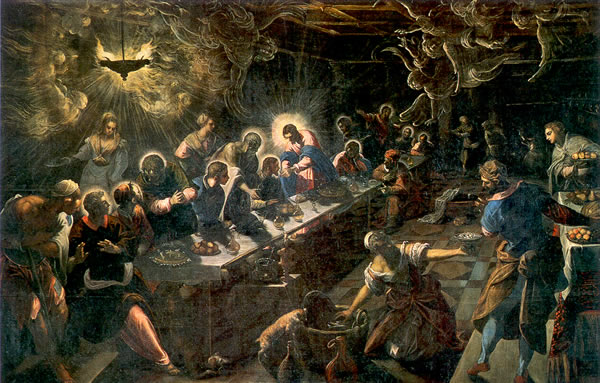How can one make any dent in the deterioration we see around us? National electoral politics has long lost its savor. Some tell us to make a difference at the “local level,” to involve oneself in local politics, start a business, or invest in one’s community. Yet, to a young person for whom buying a house is an increasingly difficult challenge, these recommendations seem as practical as electing a better President. Others sing the praises of lifting weights and reading good books. These are good things, and intuitively achievable, but they are solitary endeavors. One will not make his community better simply by reading good books. What is something achievable that can bring people together, in the short term, without a lot of capital?
How about hosting dinner?
Nick Gray was an isolated professional in New York City, facing the prospect of spending his upcoming birthday alone. He had made no lasting friendships attending “Young Professionals” networking events, dreary affairs with loud music and booze and elevator pitches. In a fit of rebellion against “quiet desperation,” he decided to host his own birthday party, inviting not only five of his college friends but also a random gaggle of the people he saw day-to-day: neighbors, friends of friends, and acquaintances. The event was a success–it turns out people like being invited to enjoy good food and good conversation in a friendly home. He pushed forward, hosting regular cocktail parties with a mix of existing friends and random invitations. Eventually the habit gained him a reputation and some professional advantage: His parties became the source not only of friendships, but business partnerships and collaboration. He published a book (The 2-Hour Cocktail Party: How to Build Big Relationships with Small Gatherings), reporting on his successes, failures, and conclusions from his efforts. Now he is attempting to build an online community, encouraging others to host their own parties, seek new friendships, and build on his work.
The book is full of worthwhile advice. Make sure to enlist a few confederates so you know you will have a core group at your party, before you extend invitations to people you don’t know well. Set a time limit and kick everyone out afterward. Offer name tags to help newcomers learn names. That said, the book is primarily aimed at childless professionals seeking to befriend other childless professionals, and thus has little advice for young families (by Gray’s own admission) or Christians seeking fellowship. To that end, in the interest of nurturing this young but exciting field of Hosting Science, we present two case studies from our own experience as an inspiration for the aspiring empirical socialite.
Case 1: The Railroad Apartment
When we were young and newly married, we began attending a Bible study one evening a week, but it was inconveniently timed. We would get out of work in the early evening and have two to three hours before the study began. This meant that we would either sit in a restaurant, nursing cups of soup for hours until it was time to go, or go home and lose momentum and not attend. We began inviting people at the Bible study to come to dinner, just so that we could do something besides kill time alone. Our apartment was a “railroad” apartment, where the kitchen, dining room and living room were all placed together in a single narrow hallway. Eight people could squeeze in at the table, but half would be stuck between the table and the wall, unable to access the bathroom for the duration. Our dinners consisted of oven pizzas and water. We eventually expanded our repertoire to include pasta or rice and beans and water. We used paper plates every time to ease cleanup. We had a portable dishwasher on wheels that would get water from the sink, which could wash the cups and silverware.

Artist’s rendition of the amount of space which was quite sufficient for the original dinners, taken from Seinfeld (David and Seinfeld, 1989-1998).
There quickly became a few regulars who would come almost every week, but also a larger circle of people who would pop in on occasion. We would regularly invite people from the Bible study, but it only rarely became a tight squeeze. (One dinner had twelve attendees including us, and we needed to pack in our two office chairs to seat everyone). At this scale the dinners were cheap, not labor intensive, and small enough that we could clean up the mess before heading out. Not only that, but we could chat with a few friends in a relaxed environment before heading off to the more intellectually rigorous (and more densely-packed) Bible study. We also had two friends who met and began dating at these dinners. Now they are married with children. This was not due to our scheming or design, it was just a byproduct of grace and having a regular space where friends could gather. We did not think to use name tags as Mr. Gray recommended, but the number of people attending was always fairly small, so even newcomers would not be terribly overwhelmed. We did not solicit “potluck” dishes, though occasionally some guests would bring a side of bread, fruit, or dessert.
Case 2: Old Fezziwig
During COVID-tide we moved into a house with a small yard. We now had a toddler. The house was definitely less cramped than the apartment, but unevenly apportioned. It had a large living room but a small kitchen (the architect no doubt inspired by Frank Lloyd Wright).

Artist’s rendition of cleanup after dinners in the home. Mr. Fezziwig’s Ball (Leech, 1843).
We returned to hosting weekly dinners at our new location. Over time, the number of attendees grew, first to fifteen and then twenty people each week, perhaps due to the dearth of competing activities during COVID “social distancing.” We regularly had at least one priest in attendance, so at 6PM sharp he would pray over the food before we sat down and ate. As we host on Fridays, when Catholics are enjoined to fast from meat, our dinners are always vegetarian and often vegan. We experimented with cooking more varied and numerous dishes: potatoes, quiches, and Indian rice. We learned of any allergies among our regular guests, and adjusted dishes accordingly. While feeding this many people does add somewhat to the grocery bill, we make simple, delicious meals that have a low unit cost. In addition, more people than before would, unbidden, bring their own contributions: sometimes bread, fruit, or dessert, but sometimes entire dishes like casseroles, soup, or chili. After the priest finished his prayer we would highlight what was at the table to eat, recognizing everyone’s contribution.
For seating, we employ four picnic tables (like these) in an L shape across the living room and into the dining room and can seat twenty-one guests. Eventually, we gave away our television, as it got in the way of the chairs and tables. We make use of paper plates and solo cups, but real silverware. We also now have plenty of sparkling water on hand. Circulating serving bowls across all the tables is a necessity for everyone to have a chance to sample everything. When the weather is warm, we discovered that extra people can overflow onto the back deck or yard. On days that have had quite a lot of guests, some of the regulars began giving up their own seat when finished eating, cleaning up their place and making their way to the back deck, so someone else can sit down and take their place.
As families began to bring kids, we began to prepare a kids table in the basement. We set up a coffee table with pillows all around so the kids can sit together on the floor. We make plain pasta with red sauce for the kids, something inoffensive to their juvenile palates. Usually one of the moms will coordinate fetching the children from the basement to the main floor in time for the opening prayer, and then loading their plates with pasta before they go back down. If weather at all permits, we encourage the kids to make their way to play in the yard afterward. While we do not explicitly appoint babysitters as Nick Gray suggests, some of the adults who have more enthusiasm for playing with children will gravitate to the backyard to chase them or be chased, as the games require. We have observed that it is often the fathers and young men who play, while the women stay inside holding babies and chatting with new guests and old friends.
As the number of weekly guests grew, we started prepping earlier. It is not too onerous, even with a day job, to put the tables up the night before and set them on the morning of the dinner. When we were both working, frozen pizzas could be thrown in the oven at the last minute after work. Now in a season of one breadwinner, a stay-at-home mom is able to prioritize cooking all day so that the meals are prepared for the evening. Of course, many hands could make light work, but in practice having these dinners on a Friday night means that most people will be at work, school, or otherwise busy during the day. Spreading out the preparation makes it feasible even with only a few hands. We open the doors at 5:30PM, start the dinners at 6PM, but at 7:15PM we announce that we are kicking everyone out. Within 15 minutes everyone throws away their paper plates and solo cups, folds up the chairs and stores them in the basement, and clears away the mess on the tables so that they also can be folded up and stored. A few stragglers hang around for some final conversation, but soon we kick them out to put the kids to bed. Finally (and this is key), our dishwasher churns for the next day or two to clean the two or three loads of dishes from the event.
These two hosting models have worked well for us for years. We present them not merely for your entertainment, but that you may go and do likewise! The simplest way to begin building community is to gather people around your table with a delicious meal and pleasant company. Your circumstances will be different, and not every detail in this article will be useful to you: “test everything, and hold fast what is good!” (1 Thess 5:21). As you host, you will find your own tricks and techniques that make it work well.
Emily Post, the author of Etiquette1, and its ultimate authority in America, has become a byword for immaculately regimented hosting. Yet she repeatedly exhorts her reader to focus ultimately on the good of others: “…good manners are, after all, nothing but courteous consideration of other people’s interests and feelings”. How do we achieve this? In her own words:
“Never do anything that is unpleasant to others. Never take more than your share—whether of the road in driving a car, of chairs on a boat or seats on a train, or food at the table.”
To her, this is the first rule of etiquette “which hundreds of others merely paraphrase or explain or elaborate.” Achieving this as a host does not require learning how to coordinate an eight-course meal or how to efficiently employ footmen. The imperfect and sometimes chaotic dinners of Mr. Fezziwig or Tintoretto’s Last Supper can still be a delight to guests if they are done with love for other people. That love, manifested in the act of hosting a dinner, is a community-building virtue within your reach. When will you host your first dinner?
- Post, Emily. Etiquette in Society, in Business, in Politics, and at Home. 1922.

